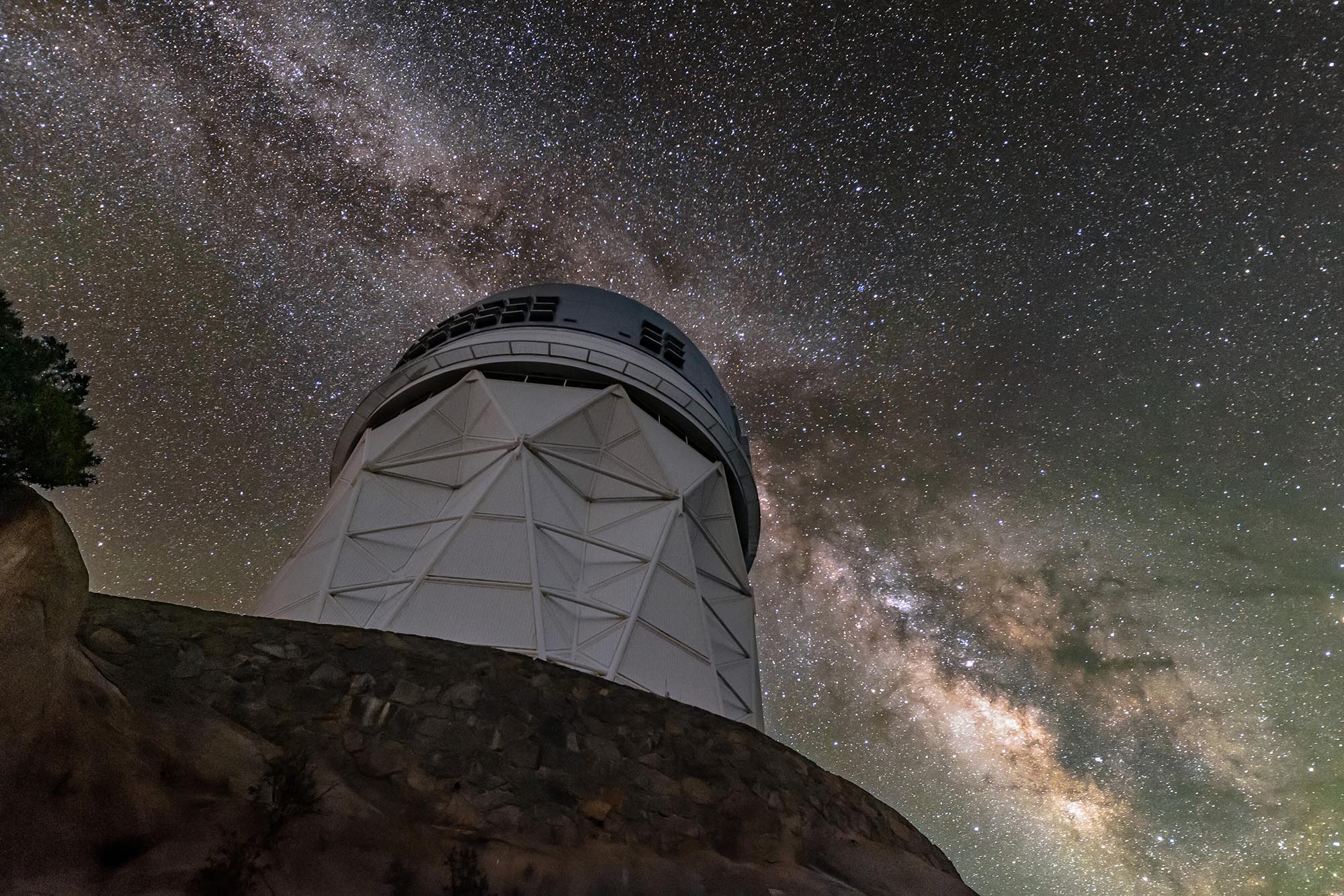DESI Provides Best Test Yet of How Gravity Behaves at Cosmic Scales

By NOIRLab
Researchers have used the Dark Energy Spectroscopic Instrument (DESI) to map nearly six million galaxies across 11 billion years of cosmic history, allowing them to study how galaxies clustered throughout time and investigate the growth of the cosmic structure. This complex analysis of DESI’s first-year data provides one of the most stringent tests yet of Einstein’s general theory of relativity.
Gravity has shaped our cosmos. Its attractive influence turned tiny variations in the amount of matter present in the early Universe into the sprawling strands of galaxies we see today. A new study using the first year of data from the Dark Energy Spectroscopic Instrument (DESI) has traced how this cosmic structure grew over the past 11 billion years, providing the most precise test to date of how gravity behaves at very large scales.
DESI is a state-of-the-art instrument that can capture light from 5000 galaxies simultaneously. It was constructed, and is operated, with funding from the DOE Office of Science. DESI is mounted on the U.S. National Science Foundation Nicholas U. Mayall 4-meter Telescope at Kitt Peak National Observatory, a Program of NSF NOIRLab. The program is now in its fourth of five years surveying the sky and is set to observe roughly 40 million galaxies and quasars by the time the project ends.
The DESI project is an international collaboration of more than 900 researchers from over 70 institutions around the world and is managed by the Department of Energy’s Lawrence Berkeley National Laboratory (Berkeley Lab).
In their new study, DESI researchers found that gravity behaves as predicted by Einstein’s general theory of relativity. The result validates our leading model of the Universe and limits possible theories of modified gravity, which have been proposed as alternative ways to explain unexpected observations, such as the accelerating expansion of our Universe that is typically attributed to dark energy [1].
The DESI collaboration shared their results in several papers posted to the online repository arXiv today. The complex analysis used nearly six million galaxies and quasars and lets researchers see up to 11 billion years into the past. With just one year of data, DESI has made the most precise overall measurement of the growth of cosmic structure, surpassing previous efforts that took decades to complete.
Today’s results provide an extended analysis of DESI’s first year of data, which in April made the largest 3D map of our Universe to date and revealed hints that dark energy might be evolving over time. The April results looked at a particular feature of how galaxies cluster known as baryon acoustic oscillations (BAO). The new analysis broadens the scope by measuring how galaxies and matter are distributed on different scales throughout space. The study also provided improved constraints on the mass of neutrinos [2], the only fundamental particles whose masses have not yet been precisely measured. Neutrinos influence the clustering pattern of galaxies very slightly but this can be measured with the quality of the DESI data. The DESI constraints are the most stringent to date, complementing constraints from laboratory measurements.
The study required months of additional work and cross-checks. Like the previous study, it used a technique to hide the result from the scientists until the end, mitigating any unconscious bias.
“This research is part of one of the key projects of the DESI experiment — to learn about the fundamental aspects of our Universe at large scales, such as matter distribution and the behavior of dark energy, as well as fundamental aspects of particles,” says Stephanie Juneau, NSF NOIRLab astronomer and a member of the DESI collaboration. “By comparing the evolution of the matter distribution in the Universe with existing predictions, including Einstein’s theory of general relativity and competing theories, we’re really tightening the possibilities on our models of gravity.”
